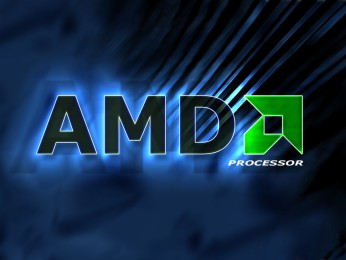 Reliable sources said Nvidia is to release a number of products in March this year, while the price of existing products drops this month.
Reliable sources said Nvidia is to release a number of products in March this year, while the price of existing products drops this month.
 Reliable sources said Nvidia is to release a number of products in March this year, while the price of existing products drops this month.
Reliable sources said Nvidia is to release a number of products in March this year, while the price of existing products drops this month.
 Figures leaked to the great unwashed by deep throats within AMD show that its next-gen flagship gaming graphics card will really put the wind up its envious competitor, Nvidia.
Figures leaked to the great unwashed by deep throats within AMD show that its next-gen flagship gaming graphics card will really put the wind up its envious competitor, Nvidia.
Dubbed the R9 390X, the card has numbers which make Nvidia’s Maxwell architecture-based GeForce GTX 980 and GTX 970 look a bit weak.
Let’s be clear, the GTX 980 and GTX 970 are damn fine cards – they are both faster and more power efficient than their predecessors, a tough act for AMD to follow. AMD was already behind in the power consumption stakes with its R9 290X performing well, but consuming much more power than the GeForce GTX 980.
It appears that AMD has cracked the high power consumption of its previous generation graphics cards.
Leaked benchmarks claim to show that a yet unknown graphics card is over 15 per cent faster than Nvidia’s GeForce GTX 980, yet consumes only 12W more power on average.
Several websites, including WCCFTech, claim that the style of the leaked slides is the same as those that appeared for several previous GPU launches too, so there is some credibility to the results as well.
This means that AMD could well be launching a stunning graphics card early in 2015 which will give Nvidia a good kicking.
It certainly needs to do something. Nvidia is in charge of the above $300 market, with its GeForce GTX 970 and GTX 980 out-performing AMD’s equivalents both in terms of speed and power efficiency. Nvidia is expected to launch its GTX 960 soon too, which will further cement its dominance a little lower down the price range.
 The PC market has been in trouble for quite a while, but even before the most recent slump, there were a few telltale signs that many big players were getting ready for a slowdown. Lavish launch parties aren’t very high on the agenda and the 2008 crash only sped up the austere trend.
The PC market has been in trouble for quite a while, but even before the most recent slump, there were a few telltale signs that many big players were getting ready for a slowdown. Lavish launch parties aren’t very high on the agenda and the 2008 crash only sped up the austere trend.
AMD is now taking a different route. After years of low-profile product launches, the company is holding a big bash in Hawaii, where it will launch its latest Hawaii GPU on Wednesday.
This is clearly a statement of intent – AMD wants to raise the bar in the GPU space yet again. Nvidia on the other hand is talking up Tegra, but it’s not doing nearly as much on the GPU front. AMD has a few highly successful promotions in the form of Never Settle bundles, while Nvidia talks Tegra, Tegra and more Tegra. Did we mention Tegra?
So what’s behind AMD’s recent change of heart? Well, it might be a knock-on effect of Rory Read’s hands-on approach to management, but we believe it represents a strategic shift in AMD’s thinking. Nvidia still has a firm grasp on the professional market, with its high-margin Quadro series. It is also beating AMD in notebook design wins – but notebook sales aren’t going very well and with each new generation of Intel Core chips and AMD APUs, integrated graphics are getting better, hence the low-end discrete GPU market is evaporating.
Tegra was Nvidia’s way to tap new markets and make up for lost ground in the GPU space. It was by no means a failure, but it hasn’t been a huge success either. Nvidia no longer wants to deal with console GPUs, hence it ceded that market to AMD.
To some extent, AMD and Nvidia are no longer vying for the same market. There’s never been so little overlap when it comes to the AMD – Nvidia duopoly. AMD does consoles, Nvidia does discrete mobile GPUs, AMD does APUs, Nvidia does Tegra and so on.
Nvidia will continue to do well in the workstation space, as workstations are still selling quite well and they’ve been largely unaffected by the PC slump. Sales of gaming hardware are projected to grow at a steady CAGR of about three percent for the foreseeable future, which means both AMD and Nvidia should have no trouble selling mainstream and high-end discrete graphics. However, the console wins and the lack of presence in other markets mean that AMD is left to pursue the core gamer market more actively.
This explains the Hawaii bash along with the huge bundles. As Nvidia tries to diversify, AMD will try to attack its core business and right now it is lot more aggressive than it was a year or two ago. Whether AMD’s back-to-basics strategy will work remains to be seen.